|
Kingston
first started as a silver mining camp called Percha City being
located along Percha Creek where the first piece of rich silver
ore was found in 1882. By the end of that year, the town had
a population of 1800, mostly miners and prospectors. The women,
with the exception of the few miners' wives, were there to entertain
the male population.
The town did not have a church
for sometime. When one was built, the ratio was one church to
22 saloons. As the town grew, it also settled into a more peaceful
existence despite several unsuccessful Indian raids. What remains
of Kingston makes for an interesting visit. Submitted by Henry
Chenoweth.
Kingston was
founded in August 1882 when miner Jack Sheddon discovered a rich
lode of silver ore at what would be one of the Southwes most
famous mines: the Solitaire. town was named for another area
mine: the Iron King. Other area mines: Calamity Jane, Black Colt,
Caledonia, and Little Jimmy.
Kingston was home to about 1,800
people in 1882. It peaked at more than 7,000. Some $7 million
in silver was mined in the Black Range Mining District in the
1880-90s.
One of the wildest towns in the
Wild West, Kingston once had 22 saloons, 14 groceries and general
stores, gambling halls, a brewery, three newspapers ("The
Clipper," "The Shaft" and "The Advocate"),
restaurants, hotels and a theater where actress Lillian Russell
performed. Albert Fall, later infamous in the Teapot Dome Scandal
when he was secretary of the Interior, was once a Kingston miner.
Other famous visitors: Mark Twain, President Grover Cleveland,
Butch Cassidy, Sundance Kid and Black Jack Ketchem. Sadie Orchard,
a native of London, operated a brothel in Kingston (on Virtue
Street) and later in Hillsboro.
Kingston declined when silver prices
dropped and deposits ran out. The post office closed in 1957.
The Victorio Hotel, Percha Bank and other old buildings still
stand and there are today 32 permanent residents. A brass bell
cast in 1877 and used to call firemen and sound mail call is
still at the fire station on Main Street. Operating in Kingston
today are Black Range Lodge Bed and Breakfast, Soar Gallery,
Jane's Wind-Socks and Camp Shiloh. Courtesy Michael Cook.
Here is a correction to make. Kingston was not the largest town in New Mexico Territory, not even close. As best we can tell, the myth of 7,000 started in 1921 (28 years after Kingston was abandoned) with a story in Forbes magazine. The town topped out at about 1,200 in 1890. All of Sierra County, NM where Kingston is located didn't reach 7,000 until 1950! Have a look here:
http://hillsborohistory.blogspot.com/
http://www.arcadiapublishing.com/mm5/merchant.mvc?Screen=PROD&Product_Code=9780738579528&Store_Code=arcadia&search=NEW&offset=&filter_cat=&PowerSearch_Begin_Only=&sort=name.asc&range_low=&range_high=%20%26srch_newbook%3D1
http://www.homeaway.com/vacation-rental/p372505

Cemetery
Courtesy Dolores Steele

Cemetery
Courtesy Dolores Steele
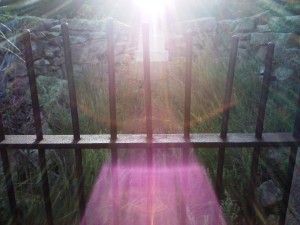
Kingston Cemetery
Courtesy Mark Archambault
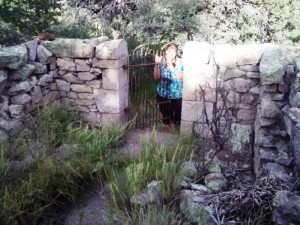
Kingston Cemetery
Courtesy Mark Archambault
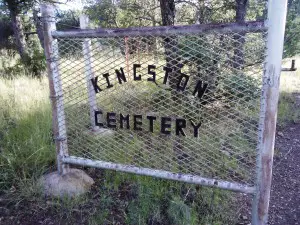
Kingston Cemetery
Courtesy Mark Archambault
|

Kingston Homes, circa 1880's.
Courtesy Black Range Museum
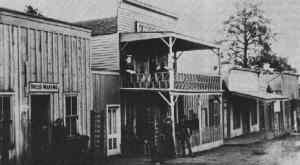
Kingston Main Street, circa 1880's
Courtesy Black Range Museum
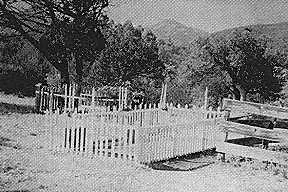
Kingston's cemetery is so rocky dynamite is used to dig graves.
Courtesy Michael Cook.
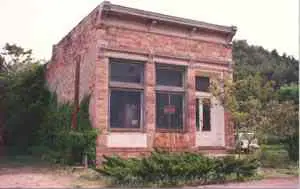
Percha State Bank
Courtesy Dolores Steele
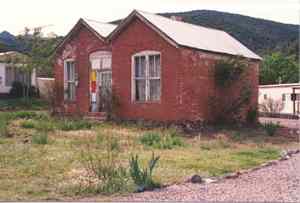
Former Assay Office
Courtesy Dolores Steele
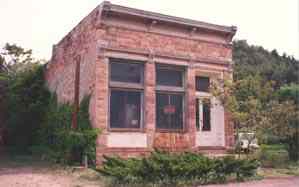
Kingston
Courtesy Dolores Steele

Kingston Cemetery
Courtesy Mark Archambault

Kingston Cemetery
Courtesy Mark Archambault

Kingston Cemetery
Courtesy Mark Archambault
|
